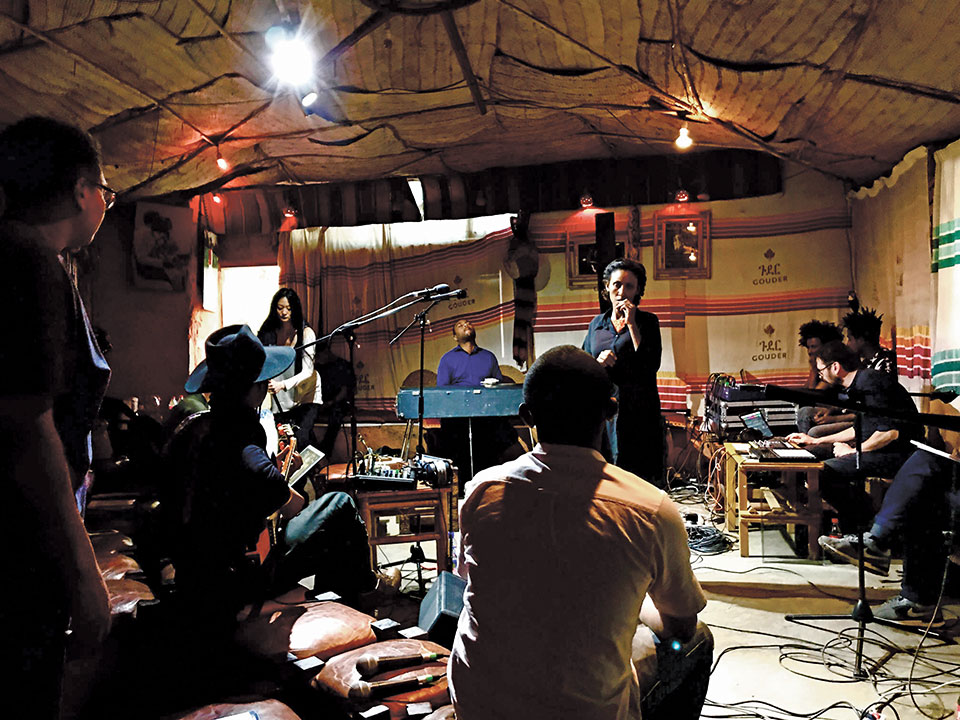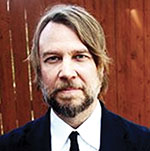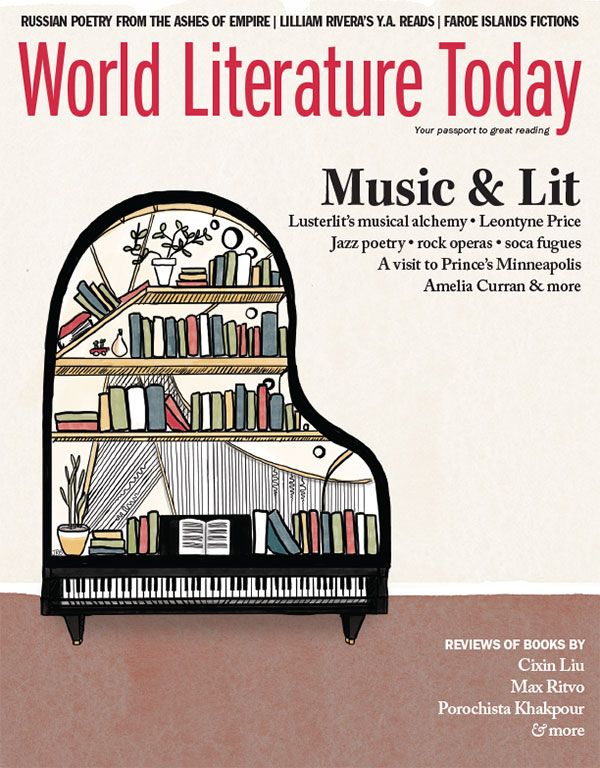The Rehearsal: Poetry-Jazz in Addis Ababa

Inside the Fendika Cultural Center that houses the artists’ rehearsal space. All Photos (except where noted): Eric Ellingsen
“Poetry is not a form, but rather a result.” –Amiri Baraka
In front of an average crowd of about 1,500 people, a group of poets and musicians perform in Ethiopia. Combining Wax and Gold poetry, music, and dance, a group known as Tobiya Poetry-Jazz acts as political ambassadors telling Ethiopia’s stories. The story behind the scenes, though, is a compelling one.
The date is March 24, 2018. Addis Ababa is in its second state of emergency. The new and current prime minister of Ethiopia, Abiy Ahmed Ali, will be appointed nine days from now, though nobody now knows who will be appointed or the day the appointment will occur.
During this same spring, a group of German, US, and Ethiopian musicians, poets, artists, and curators met in Addis Ababa for the fifth edition of Poetry-Jazz. Poetry-jazz has become a form of art practiced by different groups in Addis Ababa. For the last five years, our semirotating group of artists, Poetry-Jazz, has been supported by the TURN Fund of the German Federal Cultural Foundation. These gatherings materialize as public performances, platforms, and publications reflecting the artists’ role as political ambassadors. We are meeting for the fifth time in six years in a kind of creative hopscotch, traveling between Berlin and Addis Ababa. Together, we instigate a semi-ancient form of Ethiopian poetry called Wax and Gold. This time we all agree that the gold, usually hidden in the wax, is to be on the outside of what we make together. We want all gold, heavy things, heaviness itself, something solid that melts, like some heavy metals, at the temperature of the hand.
We want all gold, heavy things, heaviness itself, something solid that melts, like some heavy metals, at the temperature of the hand.
We seek the gold through a form known as poetry-jazz, which combines music and poetry. Songs in Ethiopia are stories, physical spaces where history is continually approached, negotiated, tuned, and re-turned to. If poetry resists the intelligence almost successfully, as Wallace Stevens says, then in poetry-jazz rehearsals, we seek the almost more than the absolutely there, the almost more than the already there waiting-for-you-to-arrive. And when the poets don’t know where to go next, the musicians go there.
THE REHEARSAL SPACE for Poetry-Jazz’s fifth edition is a living compound called Fendika Cultural Center. The front entrance blends chameleon-like into the street-side lattice of small-scale, individually owned storefronts whose wares range from electronic parts to a single Band-Aid to diagonally stacked tables of tomatoes and limes. The inner courtyard is lined with benches, couches, tables, oil-drums for evening fires, a water pump for daily laundry, two water closets, two hand-dug latrines without any porcelain in site. At the end of the courtyard is an art gallery with three interconnected rooms. Blank scented smoke lazily issues from the center room. The gallery hosts internationally exhibiting contemporary Ethiopian artists, regulars in Addis Ababa’s Museum of Modern Art. The week we are rehearsing, there is an exhibition that takes the form of a 1,008-hour coffee ceremony, by Robel Temesgen, a sometimes poetry-jazz co-instigator of sound things. It’s like our senses are surroundings surrounded; the visual and smelly art around us, we feel visual and olfactorily surrounded by things that corresponded to the auditory space we care about and attempt to put into sounds leaning toward words.
The rehearsal space itself is a series of one-story mud-stone-brick-timber-sheetmetal enclosures, a thick, living urban carpet, an organic Mat Urbanism that holds up under covered corrugated metal roofs that connect and carve into multiple smaller spaces, inner courtyards, smaller scale public footpaths. It is an urbanism of forms leaning into one another, load-bearing connections that hold themselves up. A wall wraps around the living compound, a bricolage sheath replete with gates (and probably Gates somehow). Over time, holes and doors are carved between connected but closed things, like the musicians’ notes in poetry-jazz. Like most older fabric of Addis Ababa, this living compound is being elbowed out by new developments, whose “clearances” and “renewals” and “modernizations” are no different than the housing displacements in US cities from New York to St. Louis: they all also rely on currencies of spoken and legal language, words like “slum” and “derelict,” “blighted” and “ghetto.” All urban change relies on carefully chosen words.

Over time, holes and doors are carved between connected but closed things, like the musicians’ notes in poetry-jazz.
For three years, the entrepreneur who started this establishment lived under the table where the bar now stands. His parents came over as Sudanese refugees last century. He left the streets to live under the table as a young teenager. Over the seven years that followed, he acquired geographic responsibility and some kind of ownership of the space, which has been designed as a living-working space for a community of young adults without option or apparent means, the chance to live, learn a skill—instrument-making, how to play, how to dance—while simultaneously learning how to live and manage a self-determining, urban alternative community.
Between rehearsals, Melaku Belay rattles off a few names that have played in Fendika’s inner sanctum, Ethiopian legends in the jazz scene, and I stand there nodding in a way that tries to convey familiarity, wondering if any of the names I recognize are names he intends for me to recognize. Being from Kentucky, I have a background in glossolalia and beer cheese, grew up amid apocalypse lips. The only way Mulake can even begin to communicate to a Farangi, an outsider, from Kentucky, the cultural significance of the Ethiopian legends that have played in his space since it’s opened, is to tell me the story of how one day Flea, of the Red Hot Chili Peppers, called him up and said, “Hey, this is Flea, of the Red Hot. I just flew into Ethiopia and heard this is the place where someone like me can drop in and play with whoever is playing without needing to be announced.” Then Flea played there, just another Farangi outsider in the cortical steam of outsiders who get to enter into the inclusive sanctum of Ethiopian jazz.
POETRY-JAZZ MEMBER ROBERT LIPPOK grew up on the east side of the Berlin wall before the Berlin wall came down. Last century Robert’s mom walked into a GDR ministry and asked officials what her son was going to be. After some tests, it was concluded that Robert couldn’t be anything. Please, my son must be something, he must have a skill, a craft, he must work, be trained. So, geographically simultaneous in time to the formation of the German band Kraftwerk and the birth of electronic music, Robert found himself a shoe cobbler, rehearsing music with friends on homemade instruments and drawing unwelcome attention to himself from the East German government for his sounds.
As I sit here in Addis Ababa, in the backyard of our rehearsal space, thinking about our walls and fire walls presently going up the US, Robert tells stories about growing up in a time when music and writers and other HamletMachines directly impacted the politics and mounting fervor of the more radical imaginations. Like Ethiopians, Robert knows sounds can be sand grains in the state machine. Recall how, as Ryszard Kapuściński relates in the book The Emperor, the Ethiopian revolution that ended a forty-four-year reign of Haile Selassie, triggering a state ideological shift, started in an art exhibition in the fashion department at the University of Addis Ababa. And we are being watched. Mercy’s been warned.
I enjoy calling out for Mercy across the compound. Mercy is the Ethiopian jazz-poet and artist Mihret Kebede. Mercy write-sings about the everyday-sacred things, the sharing basket (the Lematis), the shared plate (the Safed), the small injera made for only one person (the Engocha). Like the German jazz-poet-musician Rike Scheffler, who writes water, Mercy writes silence itself rather than about silence.
It is in the space where language fails that poetry breaks in. It is in the spoken word, in the rehearsing, where guts gain feet, where words can fail well.

Mercy's poems are like the everyday-sacred that injera, a communal bread, represents. Photo: Rod Waddington/Flickr
In Ethiopia, injera is a communal bread. Nijira could be described as a spongy, fermented pancake bread. Thinner than an American diner pancake, a tad thicker than the doughy shell of a French crepe, it’s a bread that’s too soft to hold itself up. We eat it in between rehearsals every day. The injera’s the foundational stratum on which the fasting gomen (collard greens), yekik wat (split-pea sauce), shiro wat (chick-pea flour) are placed. The injera is communal, shared, a gustatory Commons. It’s scooped and torn with the right hand, creased and delighted in. It’s a daily communion, a symbol that becomes you.
TO ONLY MAKE ENOUGH INJERA for yourself is to reject the everyday-sacred that the injera represents, is to turn the sacred things into mere currency of calories. When Mercy sing-speaks about everyday things like bowls with holes in the bottom where the rich tastes leak out, like when Mercy speaks of silence, the Demos feels the sacred. There is a ping-pong between the everyday meaning in the everyday things Ethiopians know, like bread, like coffee, and the everyday things ideologically represented. Mercy’s poems hold up the everyday-sacred like the shared injera, holding up the public words, stories, questions.
In Cagian style, Robert has been collecting audio portraits of Addis Ababa since 2012, the year when the Institute for Spatial Experiments collaborated in its first edition of Poetry-Jazz. Those city sounds have a subtle perceptual spatial effect on the rehearsals. Their volume is integrated in ways that don’t call attention to themselves. And yet they help generate environment, atmosphere, ambiance, Umwelt, aura if one wants to go there. I like to go there. Tasew especially.
Tasew Wendem Mose, poetry-jazz flutist, also constructs his instruments from what grows around him. Tasew makes his own bamboo flutes. Aristotle once said that anybody can drill holes in a stick; the artist is someone who knows where and how to put the holes in a stick so that stick can produce the desired notes. In wordplay that amuses the poets, there are no reeds in his flute.
Pre-jazz-poet Vito Acconci once said that poetry takes place where language fails, where words fail, where meaning breaks down. It is in the space where language fails that poetry breaks in. It is in the spoken word, in the rehearsing, where guts gain feet, where words can fail well. In the disturbed fringe of words chipped and stretched into sounds where what you hear might not be what is being said, where we dwell as we do well, as T. S. Eliot says, we were as we whirr, where seas becomes sees become seize becomes Tasew’s C’s.
NEO MUYANGA WAS INVITED to join us in Poetry-Jazz’s Solid Gold fifth edition. Prefixes indicate Neo goes with -litic things, -icles, and -igriphies. Things that rock.
Neo started what many consider to be the pan-African radio station, the Pan-African Space Station—an acoustically driven platform that also engages “the axis of black music and the aesthetics of protest.” Christina Werner, Solid Gold choreographer and curator, learned that Neo had played one of our earlier Poetry-Jazz editions on the Space Station. After some artistic and curatorial overlaps in the African Union, Christina sent Neo a greeting to join us.
It is a strange feeling one has to get over, the feeling of being greeted and welcomed with open arms to countries like Ethiopia and Germany today, when the US is closing up and arming. Poetry-jazz is all about the rehearsal. When rehearsing together, we are making the road by walking, as educator Paulo Freire says. We are laying that road sound-by-sound together. When peering into gravity, astrophysicists can see “dark matter” by how that invisible gravity field bends light. Sound bends light, too. Listening bends our individual trajectories, our acoustic positions. Listening invaginates the Trust Space. The rehearsal is a Dialogue of Listening, not merely a chance to speak out.
When peering into gravity, astrophysicists can see “dark matter” by how that invisible gravity field bends light. Sound bends light, too. Listening bends our individual trajectories, our acoustic positions.
History is a hammer that asks questions, and the Poetry-Jazz musicians split acoustic atoms with their pickaxes. Neo’s ax comes apart so that he can pack his electric guitar as a carry-on. Neo says that nobody really knew how to pronounce Neo’s name before the release of The Matrix. Neo was living and making music in Los Angeles at the time. Then the Wachowskis’ movie came out. Neo is a Zulu name. Overnight, the rare and exotic-sounding morphemes whir on everyone’s lips, and the association of the new, which also happens to be a translation of the Amharic name Addis, became concretized in the mythopoetic imagination of Western media-pop.

Neo taught us all a Zulu song, which we performed as full group on Solid Gold. Speaking Zulu, now considered by linguists to be the home language of South Africa, was a new thing for all of us, Ethiopian, American, German, poets and musicians and choreographers alike. Learning something together helped us cultivate a Trust Space, brought us up to date experimentally with each other. Songs are places, too, just like poems, and the Zulu protest song gave us something that allowed us to step back from our own words and songs, offered something that we could respectfully play around in, churning the wax, seeking alchemy, not gold. Neo took us all to a new place that we’d always been in without having to leave where we are. In other words, in a slight Kierkegaardian twist, this Trust Space allowed us to change into something that we always are. Learning a Zulu protest song from last century was a new thing that now we have in common, a Neo thing. We like it.
Like Amharic, literal translations in Zulu do not exist, are not possible. The song is about land rights, about whites returning what was stolen, about restitution rights, land equity. “Day Zero,” the day Cape Town was going to run out of water, may have been an international sham, Neo says, a political move that used words to rebrand the perception of a political party, to force somebody’s hand. Everybody is running out of the potable. “Day Zero” was manipulation of public opinion by attaching land to concepts of leadership, land as representation of democracy, demonstrating the powerful lattice of words and perception, politics and power.
THE DANCERS ARE THRUSTING on stage. Each regional song also has a score for movement. To recognize an Ethiopian melody is not merely to recognize a specific geography, it is also to know a specific dance move, a historically recognized grammar of thrusts. Of neck and wrist and hip-hinge thrusts, of rotating cuffs that provide evidence to the question geographer Doreen Massey asks in the book for space: We all know that the earth is rotating underneath us, but how do we feel what we know?
Rita Dove says, One must imagine it possible before one can see something. The image of what we make together matters too, as Poetry-Jazz filmmaker Clara Jo knows. Clara is also an expert at making visual representations that twist and snarl together the yarns of sound and vision. Clara made a video starring the German voice-actress that is the voice of American actress Scarlett Johansson. On the surface, when German audiences watched Clara’s video, they didn’t see anything particularly unusual; the people watching had to close their eyes to see it.
Rike is unsure of the meaning of thrust in English. Clara thinks thrust is like most of the sex American parents had last century where sex was primarily man-thrust. Frazer thinks thought itself thrusts. Neo hears trusts. Both thrust, I say, as Robert hears thruster, brings up UFO sounds of spaceship thruster vector nozzles.
In this sense, then, all are thrusters. We leap forward. We hold back. We “seek good balance in motion and not in stillness,” as Bruce Lee says. Rehearsing puts us in motion together, note and foot first. The process of rehearsing together, that dialogue of listening, one’s own craft and art, comfort level and ability to trust, is recontoured. One is in it. One’s art is in it, at stake, invested, vulnerable, a hairless rabbit, psychotopologically regraded. We give each other new ways of perceiving and thus of thinking about things. To open one’s artistic language, to open up, is inspiring, and the musicians and poets inspire one another. And in rehearsals, because of this shared vulnerability, a fusion of hard things gets cool, like the feeling you get when hearing Nebiy reading the poem you wrote and that he just translated into Amharic for the first time.

LAST CENTURY, THE ONLY book Nebiy Mekonnen had during the entire ten years while locked up in Ethiopia for his poetry, his song, was an English paperback edition of Gone with the Wind. Not the book anybody I’ve ever met would pick when asked, “What book would you take with you to an island?” A questionable wind-instrument requiring a kind of historicity-oriented eye to get anything good out of it today; a book that says more in how it says what it says than what it says on the literal surface. (And what it doesn’t say is not necessarily the same as silence, Mercy might say.) Nebiy takes what he finds around him and turns it into art, into poetry, into music (same diff).
Behind the Hall of Preserving Harmony, in the Forbidden City, there are two carved marble stones 17 meters long, 3 meters wide, and 1.7 meters thick, weighing about 250 tons. To preserve the integrity of these stones, the streets were dampened with water in winter and the stones slid into place. Jorge Mesfin’s music—Poetry-Jazz’s compositional foreman—is the same, his sounds move heavy, intricately fragile things around. Old-time legends recognize themselves in him.
When the old-time Ethiopian poets and musicians, the melodic lions of the lyrical, greet each other in shared deference, there is a deep respect that one feels extremely lucky just to be in the presence of. I watch someone greet Nebiy with that same strong Ethiopian embrace with which artists like Mercy and Jorga greet Rike and the rest of us. To call this an Ethiopian greeting might risk misrepresenting it, but the greeting feels like it looks: opposite hands clasping in a handshake, across and in front of the chest, hands around shoulder level, then turning the hands inward while leaning into one another. The greeting is a hug embrace without a wraparound. One is pulled and pulls, resists and is resisted by the clasped hands at the same time. It’s more like a flat bear hug than half-note. Each person agrees to the amount and length of lean, how much weight and duration to put into the greeting, how much height to hold back. One is pressed and impressed. In poetry-jazz, this is how the music and poetry greet each other each time we rehearse.
Still, music and poetry, and maybe all art in general, together and apart, have to keep up with the constant mutation of more dangerously intelligent forms of violence materializing as landscapes and legal options around us in the world today.
While in jail, Nebiy learned how to plagiarize his own future. Line-by-line, Nebiy translated Gone with the Wind onto thin cigarette papers, which his visitors smuggled out for ten years. Once out of jail, Nebiy collected most of the thin papers back. There’s an idea in the air to make Gone with the Wind the center of a traveling exhibition/performance, to sing-present all the pieces of Gone that are yet to return (poetry-jazz can be booked).
IN SOME SENSE, it is in the rehearsing where all artists are wax-makers, gold-heaters, seekers of something of value. In some sense rehearing poetry-jazz is simply about co-generating trust spaces in more musical time that others can feel, not just hear. In the end, I tend to fall on the poetry side of the lotus flower. Still, music and poetry, and maybe all art in general, together and apart, have to keep up with the constant mutation of more dangerously intelligent forms of violence materializing as landscapes and legal options around us in the world today. In Ethiopia, it is sometimes said that when in love, lemons are lightly tossed at someone to get their attention. I think most of the jazz-poets I have the chance to work with would agree with Amiri Baraka when he says in Black Art, “Poems are bullshit unless they are teeth or trees or lemons piled up on a step,” and “rrrrrrrrrrrrrrrr / rrrrrrrrrrrrrrr . . . tuhtuhtuhtuhtuhtuhtuhtuhtuh / . . . rrrrrrrrrrrrrrrr . . .”
St. Louis, Missouri
Author’s note: The series of Poetry-Jazz workshops and concerts is initiated by the Institut für Raumexperimente (Institute for Spatial Experiments), Berlin, in collaboration with Tobiya Poetic Jazz, Addis Ababa. Supported by Graham Foundation, Chicago; Kofinanzierungsfonds der Senatsverwaltung für Kultur und Europa, Berlin; Studio Olafur Eliasson; funded by the TURN Fund of the German Federal Cultural Foundation.
Clara Jo is an artist living in Berlin. Her recent film and sculptural installations work in conversation with sites implicated in revisionist histories.













